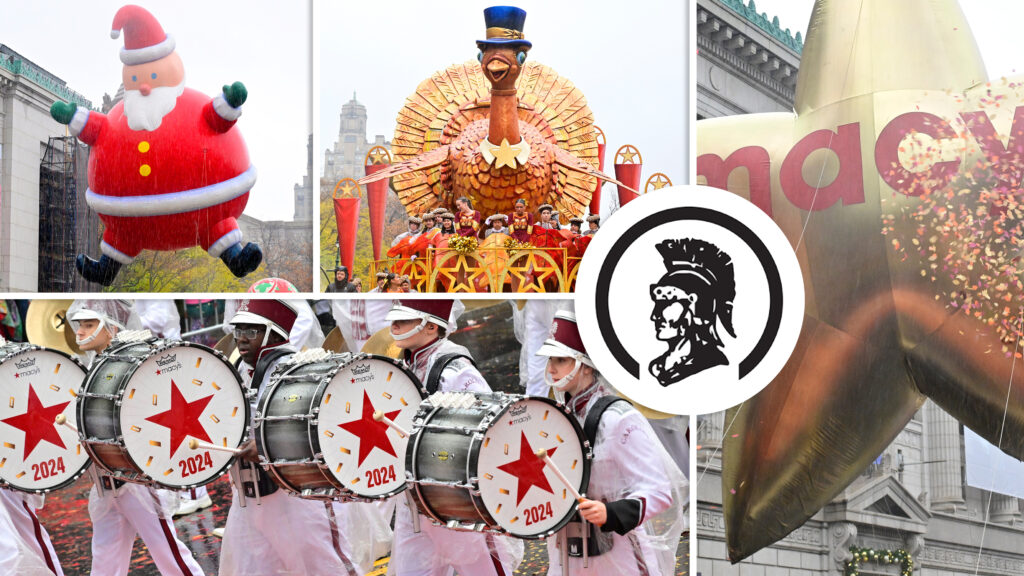The Drum Corps International World Championships headed west of the Rocky Mountains for the first time in DCI’s 35-year history in 2007, ending at historic Rose Bowl stadium in Pasadena, California.
The 2007 season offered fans a number of intriguing results that didn’t quite predict the ultimate placements in Pasadena. Bluecoats had earlier beaten every World Class corps at least once, then ultimately finished the season in seventh place with a score of 94.050, the highest ever earned for that placement. Scores were so close in the Finals competition that the Ohio corps finished only 0.125 points out of fifth place and 0.80 out of fourth.
Blue Devils ultimately took the World Championship title by 0.975 points after barely edging The Cadets in the Semifinals competition by just five hundredths of a point. The Cadets had twice beaten the Devils the week prior by a combined total of just over three tenths of a point.
Finishing in 11th place, Toledo, Ohio’s Glassmen performed a show titled, “Gitano,” named after the people who largely inhabit the Andalusian region of southern Spain across the Mediterranean Sea from northern Africa.
The show celebrated the festive jubilance of the Gitano lifestyle, its colorful exoticism and vibrant costumes of muted earth tones highlighting the charisma of the performers. Brass and front ensemble percussion performers wore strands of black beads over their right shoulders, as well as loops of reflective small disks that twinkled in the sun and under the stadium lights.
Two popular orchestral classics, Nicolai Rimsky-Korsakov’s “Capriccio Espagnole” of 1887 and Maurice Ravel’s “Rhapsodie Espagnole” of 1908, provided source material for the show. Spanish folk melodies inspired Russian Rimsky-Korsakov’s music and Frenchman Ravel’s Spanish heritage inspired his work.

Kicking off the show, front ensemble percussionists performed on ethnic percussion instruments as the public address announcer introduced the corps. Those instruments included wooden cajons that performers sat upon and a goblet-shaped doumbek drum and conga.
Meanwhile, the color guard performers spun around the field in dance, clapping in rhythmic highlights as the members of the brass section and drum line gathered in two arcs for the opening fanfare of the “Scena e canto Gitano (Scene and Gypsy Song)” theme from the fourth of five scenes of “Capriccio Espagnole.”
The next selection, “Alborada,” came from the first scene of the Rimsky-Korsakov work, inspired by traditional music from the Asturian region of far-northern Spain that celebrated the rising of the sun. This joyous movement served to feature the cheerful abandon of the color guard section featured prominently throughout the production.

Twilight descended upon the field during “La Noche (The Night),” a slow and quiet segment of the show composed by corps arrangers Robert W. Smith, Chris Hestin, and Chad Henry, stylistically inspired by Ravel’s restrained “Prélude à la nuit” movement from “Rhapsodie Espagnole.” Brass players sat on the field as members of the color guard gently swirled around them. At the musical climax, flags of purple and bronze sprung up, changing the color scheme from the original subdued yellows and blues.
“Fandango asturiano” powered the following segment, titled “Danzas,” with seductive, transparent red flags visually highlighting the final movement of “Capriccio Espagnole.” A dramatic key change emphasized a sudden halt that accompanied the appearance of flags of solid blocks of white, green and brown. A tricky triple-tonguing trumpet feature led to the horn line coalescing into the inverted block triangle form that served as the basic shape of the Glassmen logo.
After a break in the action, two trumpet players slowly started off the final musical dance as the horn line further developed the block triangle formation into linear outlines of the corps logo, essentially a small triangle inside a larger inverted triangle.
A recap of a more rousing rendition of the “Alborada” theme carried the show to its conclusion. Giant red flags and long banners of gold and brown joined in a colorful eruption that capped off the Gitano’s stay, as they would soon depart for another town, taking with them their myriad secrets as they left the intrigued townsfolk behind.

Michael Boo was a member of the Cavaliers from 1975-1977. He wrote about the drum corps activity for more than 35 years while serving as a staff writer for various Drum Corps International projects. During his lifetime Boo wrote for numerous other publications including an honors-winning book on the history of figure skating. He also was an accomplished composer. Boo passed away in 2020 and was inducted into the DCI Hall of Fame posthumously in 2021.





